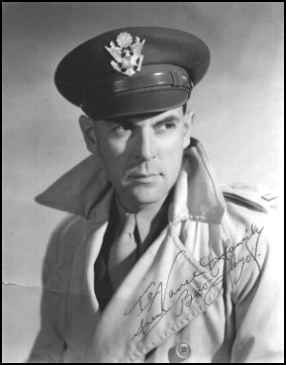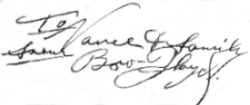
1900-1974 |
 |
 Collection of George Nolta - 10-24-03 |
|
From George Nolta Floyd invented the process of sowing rice by airplane, which grew into the crop dusting industry. His "Nolta's Flying Service" in Willows, CA also developed the first aerial tanker for fighting forest fires. During WWII, he was assigned to a special motion picture squadron, where it was their job to make training films for new pilots in the Army Air Corp. For several years after the war, he worked as a pilot for Warner Bros. and M.G.M., flying in such movies as "30 Seconds Over Tokyo", "The Bride Came C.O.D.", "God is My Co-Pilot", and "Thunder in the East" I don't know the date when Floyd soloed, but I understand he was a member of the Quiet Birdmen, so I presume he qualified. |
|
Nolta's Super Service Station---Formerly Watson's Service Station Absolutely Latest and most Modern Lubricating Equipment Tire Repairing and Complete Line of Specialties Featuring Union Oil Products ASSISTED BY VIVIAN WATSON AND ROSS LOWRY |
|
Bacon - $.13/lb Bunch vegetables - $.01/bunch (i.e. carrots, beets, turnips, green onions, radishes.) Purex - $.10/qt. If you didnít know, Floyd got his name "Speed" by winning an automobile race. I think I have that newspaper clipping and will send it later. George Collection of George Nolta, 2-24-04l |
|
By Sam Stites It is best not to inspect this ship. If you do, you will never get into it. 2. Climbing into the cockpit: Do not attempt to enter the cockpit in the usual way. If you put your weight on the lower wing panel, it will fall off, and besides, your foot will go through the wing, probably spraining your ankle. The best way to get into the cockpit is to climb over the tail surface and crawl up the turtle deck. Be sure to brush the squirrel and gopher nests out of the seat. Take care not to cut your hand on the remnants of the windshield. 3. Instruments: After having carefully lowered yourself into the seat and groped in vain for a safety belt, take a good look at the instruments; both of them. The one on the right is the tachometer. It doesn't work. The other one is an altimeter, and functioned perfectly until 1918, when the hand fell off. Look at them now, for after the engine starts you won't be able to. 4. Starting the motor: The switch is on the right; it is not connected.' However it gives a sense of Confidence to the mechanic who is pulling the prop through to hear the switch click when you say "switch off". If for some reason the motor does start, don't get out to pick up the unconscious, and bleeding mechanic, he deserved it. 5. Warming up: Don't warm up the motor. It will only run a few minutes anyway, and the longer it runs on the ground, the less flying time you have. After the throttle is opened, do not expose any portion of your person beyond the edge of the cowling. It is no fun to have you face slapped by a flying rocker arm or to be peppered by small bits of piston rings, valves, etc., that are continually coming out of what were once exhaust stacks. 6. The Take-off: The take-off is in direct defiance of all the laws of nature. If you have a passenger, don't try it. 7. The Flight: After you have dodged through the trees, windmills, and chimneys until you are over the lake, you will see a large hole in the left side of the fuselage. This hole is to allow the stick to be moved far enough to make a left turn. 8. The Landing: The landing is made in accordance with the laws of gravity. If the landing gear doesn't collapse on the first bounce, don't worry, it will on the second. After you have extracted yourself from the wreckage and helped the spectators put out the fire, light a cigarette and with a nonchalant shrug, walk (don't run) disdainfully away. |
via email from George Nolta, 8-27-05
1. On Tues., Feb. 17, 1942, a short article said:
"NOLTA HEADS WORK OF REMOVING SIGNS - Floyd Nolta, local flier, has been
designated by the Civil Aeronautics Authority, to be in charge of work of
removing identification signs here, which might aid enemy aviators. Most of
such signs, Nolta said, are on rooftops." |


|